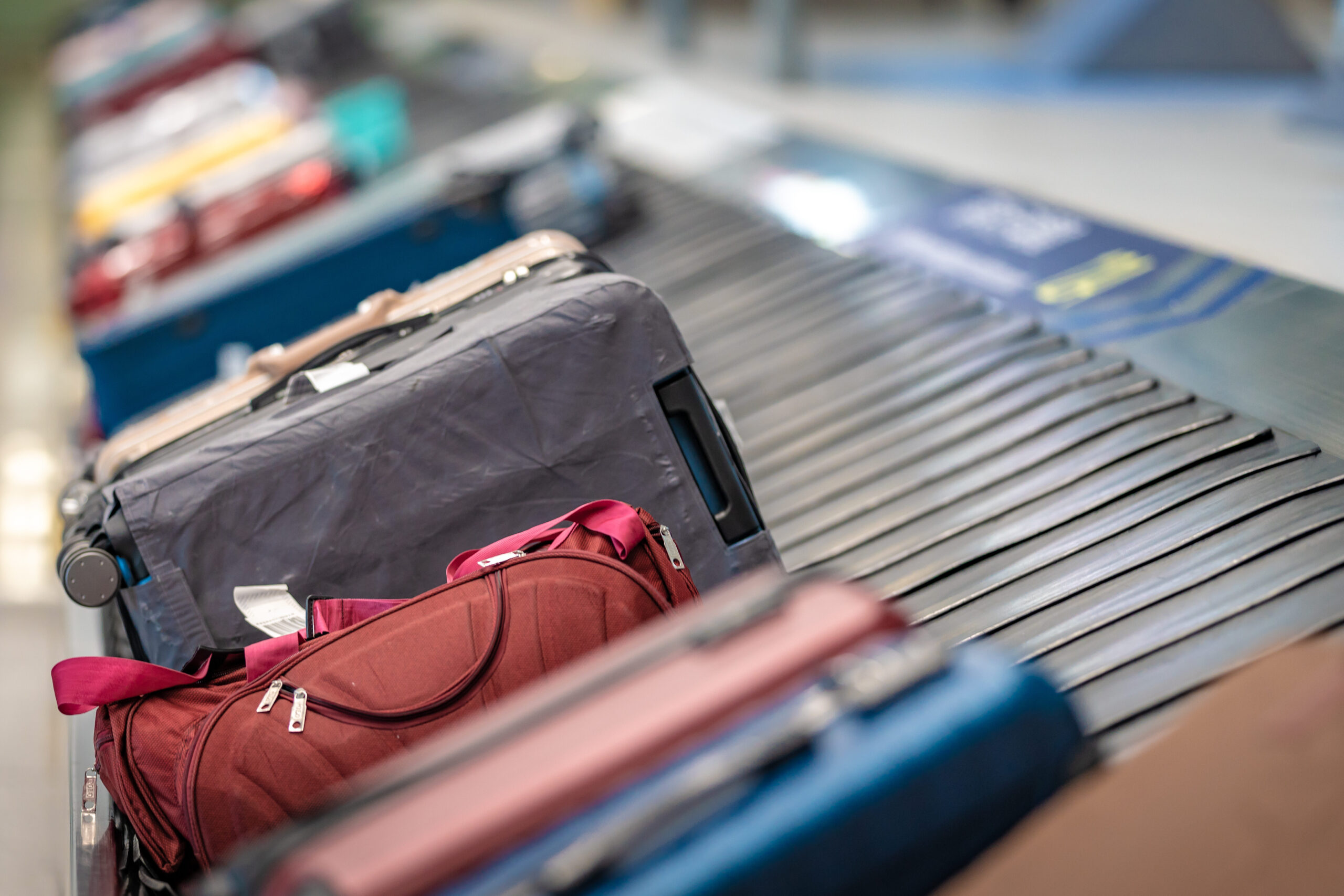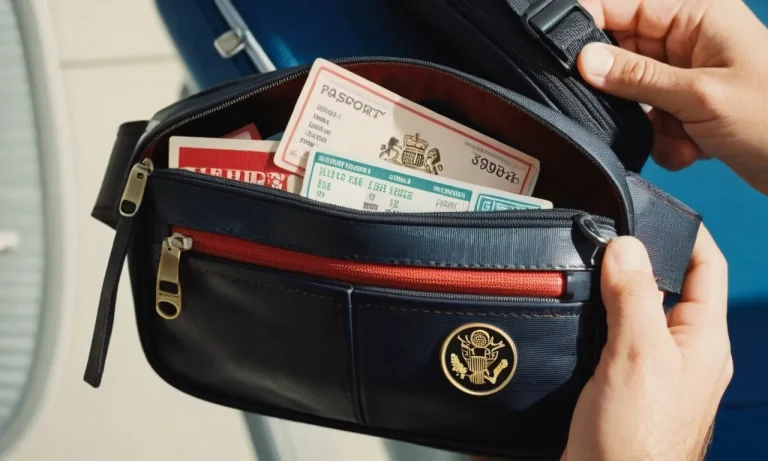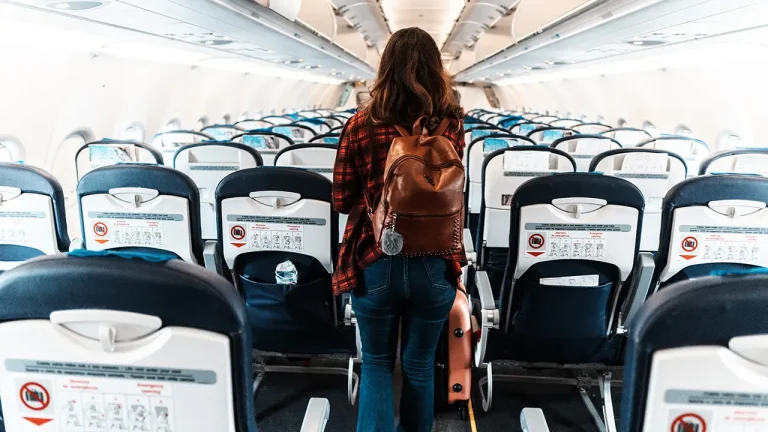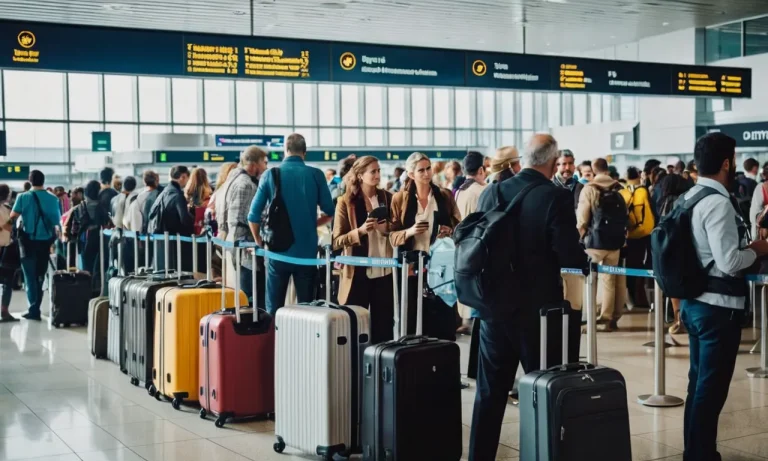Rushing to connect to your next flight is stressful enough without worrying about your bags keeping up. Will your luggage successfully transfer planes in time? The short answer is: probably, but not always.
This comprehensive guide covers everything you need to know about luggage and connecting flights. You’ll learn how airline baggage systems work and where things commonly go wrong.
We’ll provide tips to pack and tag your bags to maximize the odds of them making your connection.
You’ll know what to do if your bags don’t arrive when you do.
How Airline Baggage Handling Systems Work
Have you ever wondered what happens to your luggage after you check it in at the airport? How does it make its way through the maze of conveyor belts and reach its final destination?
Let’s take a closer look at how airline baggage handling systems work.
The Check-In Process
When you arrive at the airport, you hand over your luggage at the check-in counter. The airline staff will weigh your bags, check them for any prohibited items, and attach a barcode or RFID tag to each piece.
This tag contains information about your flight and destination.
Sorting and Routing
Once your bags are tagged, they are placed on a conveyor belt and sent to the baggage handling area. Here, advanced sorting systems use barcode or RFID scanners to read the tags and determine the correct destination for each bag.
These systems can process thousands of bags per hour, ensuring that each one is routed to the correct flight.
Some airports have even implemented automated systems that use artificial intelligence and computer vision to analyze the shape, size, and color of bags, further improving accuracy and efficiency.
Transportation to the Aircraft
After sorting, your bags are loaded onto carts or containers, which are then transported to the aircraft. This can be done using a variety of methods, including conveyor belts, automated guided vehicles, or even underground tunnels.
At larger airports, the baggage handling system may involve multiple levels and complex networks of conveyor belts, allowing for seamless transfer of luggage between connecting flights.
Security Screening
Before your bags are loaded onto the aircraft, they undergo a thorough security screening. This typically involves X-ray machines and explosive detection systems to ensure that no prohibited items or dangerous substances are present.
Transfer Process
If you have a connecting flight, your bags will be transferred from one aircraft to another during a layover. This process is carefully coordinated to ensure that your luggage makes it onto the correct flight.
Arrival and Retrieval
Once your flight lands, your bags are unloaded from the aircraft and transported to the baggage claim area. Here, they are placed on another set of conveyor belts, and you can retrieve them by matching the barcode or RFID tag on your luggage with the corresponding tag on your boarding pass.
Why Bags Sometimes Don’t Make Connections
It’s a traveler’s worst nightmare – arriving at your destination only to find out that your luggage didn’t make the same journey. While it may seem like a rare occurrence, the truth is that bags sometimes don’t make connections for various reasons.
1. Tight Connection Times
One of the main reasons why bags don’t make connections is due to tight connection times between flights. Airlines often schedule flights with minimal layover times in order to maximize efficiency.
However, this leaves little room for error and increases the likelihood of bags not making it onto the connecting flight.
2. Airport Mishandling
Another common cause for bags not making connections is mishandling by airport staff. With thousands of bags being handled each day, there is always a chance for human error.
Baggage handlers may accidentally load a bag onto the wrong plane or fail to transfer it in time for the connecting flight.
3. Delayed Flights
Flight delays are a frequent occurrence in air travel, and they can significantly impact the chances of bags making connections.
If a flight is delayed, there may not be enough time to transfer the bags onto the connecting flight before it departs. In such cases, the bags are usually placed on the next available flight.
4. Security Checks
Stringent security measures at airports can also contribute to bags not making connections. If a bag is flagged during the security screening process, it may need to be manually inspected, causing delays in its transfer to the connecting flight.
While these checks are necessary for passenger safety, they can lead to missed connections for bags.
5. Baggage Tag Issues
Sometimes, the issue lies with the baggage tag itself. If the tag becomes detached or damaged during transit, it can make it difficult for airport staff to identify and transfer the bag to the correct connecting flight. This can result in the bag being left behind.
While the majority of bags do make their connections successfully, it’s important to be prepared in case yours doesn’t.
Make sure to pack essentials in your carry-on and always keep important items like medications and valuables with you.
Additionally, it’s a good idea to have travel insurance that covers lost or delayed luggage.
The Role of Your Connection Time Window
When booking a flight with a layover, one of the biggest concerns for travelers is whether their luggage will make it to their connecting flight.
The role of your connection time window plays a significant role in determining the likelihood of your luggage successfully making the transfer.
What is a Connection Time Window?
A connection time window refers to the amount of time you have between two flights to make a successful transfer.
Airlines typically provide a minimum connection time for each airport, taking into account factors such as terminal distance, immigration and customs procedures, and security checks.
It is important to note that the connection time window can vary depending on the airport and the airline.
For example, if you have a domestic flight with a layover at a smaller airport, you may only need 30-45 minutes to make the connection.
However, if you have an international flight with a layover at a busy hub airport, you may require at least 2 hours or more to ensure a smooth transfer.
Factors Affecting Luggage Transfer
The connection time window directly impacts the likelihood of your luggage making it to your connecting flight. Here are some factors that can affect the successful transfer of your luggage:
- Distance between terminals: If your layover requires you to change terminals, a longer connection time window is usually necessary to account for the additional time it takes to reach the next terminal.
- Immigration and customs procedures: If you are traveling internationally, you may need to go through immigration and customs at your layover airport. These procedures can take a significant amount of time, especially during peak travel periods.
- Security checks: Security checks at airports can be time-consuming, especially if you need to go through multiple checkpoints. A longer connection time window allows for any unexpected delays during the security screening process.
Tips to Ensure Smooth Luggage Transfer
To increase the chances of your luggage making it to your connecting flight, here are some tips:
- Choose a longer connection time: If possible, select a layover with a longer connection time window to allow for any unforeseen delays.
- Check airport maps: Familiarize yourself with the layout of the airport and the distance between terminals. This will help you estimate the time required to reach your next flight.
- Travel light: If you can, try to pack everything in a carry-on bag to avoid the need for luggage transfer. This can save you time and eliminate the risk of lost or delayed baggage.
- Communicate with airline staff: If you’re concerned about making your connecting flight, don’t hesitate to reach out to airline staff for assistance. They may be able to provide guidance or make arrangements to ensure a smooth transfer.
Tips to Get Your Luggage There Successfully
When it comes to connecting flights, many travelers often worry about whether their luggage will make it to their final destination. Losing luggage can be a major inconvenience and cause unnecessary stress.
However, there are several tips you can follow to increase the chances of your luggage arriving safely and on time.
1. Allow ample time for connections
One of the most important factors in ensuring your luggage makes it to your connecting flight is to allow enough time between flights.
Airlines generally recommend a minimum connection time, and it’s crucial to adhere to this guideline. Rushing through the airport increases the likelihood of your luggage being left behind.
2. Opt for a longer layover
If possible, choose a flight itinerary with a longer layover. This gives baggage handlers more time to transfer your luggage between planes.
Additionally, it allows for any potential delays or unforeseen circumstances that may arise during your journey.
3. Pack essentials in your carry-on
While it’s always a good idea to pack a change of clothes and essential toiletries in your carry-on, it becomes even more crucial when you have a connecting flight.
In the event that your checked luggage doesn’t make it, having these items readily available can make a significant difference in your comfort and convenience.
4. Use luggage tracking technology
Many airlines now offer luggage tracking services that allow you to monitor the whereabouts of your bags throughout your journey.
These services provide real-time updates on your luggage’s location, giving you peace of mind and the ability to take appropriate action if necessary.
5. Consider direct flights
Although it may not always be possible, booking a direct flight eliminates the risk of your luggage missing a connection.
Direct flights can be more expensive or less convenient, but they greatly reduce the chances of any issues with your checked bags.
6. Use sturdy luggage with distinct markings
Investing in durable luggage with unique and easily identifiable markings can help prevent any mix-ups or confusion at the airport.
Brightly colored luggage or distinctive luggage tags make it easier for both you and airport staff to spot your bags quickly.
7. Stay informed and proactive
Stay updated on any flight changes or delays and be proactive in communicating with airline staff if you have concerns about your luggage. Being attentive and proactive can help resolve any potential issues before they escalate.
By following these tips, you can increase the likelihood of your luggage arriving safely at your final destination.
Remember, it’s always better to be prepared and take necessary precautions to minimize the risk of lost or delayed luggage.
What to Do If Your Bags Don’t Arrive
Arriving at your destination only to find out that your luggage didn’t make it can be a frustrating experience.
However, it’s important to stay calm and take the necessary steps to ensure that your bags are returned to you as quickly as possible.
Here are some things you can do if your bags don’t arrive:
1. Report the issue
As soon as you realize that your bags are missing, report the issue to the airline’s baggage service office. Provide them with a detailed description of your bags and any relevant information, such as your flight number and contact details.
This will help the airline track down your bags more effectively.
2. Fill out a baggage claim form
Most airlines will require you to fill out a baggage claim form, which serves as an official record of your missing bags.
Make sure to provide accurate information and keep a copy of the form for your records. This form will be important if you need to file a claim for compensation later on.
3. Stay in touch with the airline
Keep in contact with the airline and provide them with any additional information they may need to locate your bags.
They may ask for your itinerary, baggage tags, or other identifying details. Staying in touch will ensure that you are updated on the progress of your bag’s retrieval.
4. Consider travel insurance
If you have travel insurance, check if it covers lost or delayed luggage. Some policies offer reimbursement for essential items you may need to purchase while waiting for your bags to be returned.
Keep all receipts related to these purchases, as they may be required for your claim.
5. Be prepared for delays
While airlines strive to reunite passengers with their bags as quickly as possible, there may be delays due to various factors.
It’s important to have a backup plan and pack essential items, such as medications and important documents, in your carry-on luggage.
This way, you can still manage until your bags are returned to you.
Remember, the majority of delayed bags are eventually reunited with their owners. By following these steps and maintaining open communication with the airline, you increase the chances of your bags being returned to you in a timely manner.
Conclusion
Airline baggage systems are designed for efficiency, but snags can occur. With smart packing, tagging, and an understanding of schedules, you can maximize your odds of a seamless luggage transfer.
Though you have little control once your bags are checked, preparation reduces worry if making tight connections. You can relax knowing how to handle things if your luggage doesn’t keep up.







